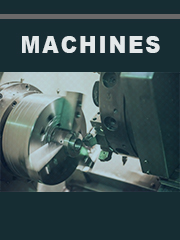Report overview
An oil-free compressor is only one of several types of compressors available. It works the same way as a standard air compressor, and may even look very similar on the outside; internally, however, it contains special seals designed to keep the crucial lubricating oil away from the compressed air. The moving parts inside the compressor require lubrication to reduce the friction. Lubrication is essential in adequate amounts, regardless of the type of compressor, in order to prevent failure of the parts. The term oil-free refers to the air that the compressor produces, not the machine itself.
This report aims to provide a comprehensive presentation of the global market for Oil-free Compressor, with both quantitative and qualitative analysis, to help readers develop business/growth strategies, assess the market competitive situation, analyze their position in the current marketplace, and make informed business decisions regarding Oil-free Compressor. This report contains market size and forecasts of Oil-free Compressor in global, including the following market information:
Global Oil-free Compressor Market Revenue, 2018-2023, 2024-2029, ($ millions)
Global Oil-free Compressor Market Sales, 2018-2023, 2024-2029, (K Units)
Global top five Oil-free Compressor companies in 2022 (%)
The global Oil-free Compressor market was valued at US$ 579.3 million in 2022 and is projected to reach US$ 721.6 million by 2029, at a CAGR of 3.2% during the forecast period. The influence of COVID-19 and the Russia-Ukraine War were considered while estimating market sizes.
Based on technologies, Oil Free Compressors can be segmented into dry type and water flooded Oil Free Compressors. Based on installed motor power, most Oil Free Compressors are with below 100 HP operating power, with about 82% market share based on market sales volume, and 55% market share based on market revenue.
Atlas Copco, Ingersoll Rand and Sullair are the top three players in Oil Free Compressor market, with about 36%, 26% and 7% market share separately (based on revenue). Other prominent market players in Oil Free Compressor market include KAESER, Gardner Denver, Fusheng, Kobelco, Boge, GE, Aerzen, Mitsui, Hitachi, Anest Iwata, Nanjing etc.
We surveyed the Oil-free Compressor manufacturers, suppliers, distributors and industry experts on this industry, involving the sales, revenue, demand, price change, product type, recent development and plan, industry trends, drivers, challenges, obstacles, and potential risks.
Total Market by Segment:
Global Oil-free Compressor Market, by Type, 2018-2023, 2024-2029 ($ Millions) & (K Units)
Global Oil-free Compressor Market Segment Percentages, by Type, 2022 (%)
Dry Oil-free Screw Compressor
Water Lubrication Oil-free Compressor
Global Oil-free Compressor Market, by Application, 2018-2023, 2024-2029 ($ Millions) & (K Units)
Global Oil-free Compressor Market Segment Percentages, by Application, 2022 (%)
Medical
Photovoltaic Products
High Prec Ision Instrument
Other
Global Oil-free Compressor Market, By Region and Country, 2018-2023, 2024-2029 ($ Millions) & (K Units)
Global Oil-free Compressor Market Segment Percentages, By Region and Country, 2022 (%)
North America
US
Canada
Mexico
Europe
Germany
France
U.K.
Italy
Russia
Nordic Countries
Benelux
Rest of Europe
Asia
China
Japan
South Korea
Southeast Asia
India
Rest of Asia
South America
Brazil
Argentina
Rest of South America
Middle East & Africa
Turkey
Israel
Saudi Arabia
UAE
Rest of Middle East & Africa
Competitor Analysis
The report also provides analysis of leading market participants including:
Key companies Oil-free Compressor revenues in global market, 2018-2023 (Estimated), ($ millions)
Key companies Oil-free Compressor revenues share in global market, 2022 (%)
Key companies Oil-free Compressor sales in global market, 2018-2023 (Estimated), (K Units)
Key companies Oil-free Compressor sales share in global market, 2022 (%)
Further, the report presents profiles of competitors in the market, key players include:
Atlas Copco
Ingersoll Rand
Sullair
Hitachi
Fusheng
Kobelco
Boge
Gardner Denver
Outline of Major Chapters:
Chapter 1: Introduces the definition of Oil-free Compressor, market overview.
Chapter 2: Global Oil-free Compressor market size in revenue and volume.
Chapter 3: Detailed analysis of Oil-free Compressor manufacturers competitive landscape, price, sales and revenue market share, latest development plan, merger, and acquisition information, etc.
Chapter 4: Provides the analysis of various market segments by type, covering the market size and development potential of each market segment, to help readers find the blue ocean market in different market segments.
Chapter 5: Provides the analysis of various market segments by application, covering the market size and development potential of each market segment, to help readers find the blue ocean market in different downstream markets.
Chapter 6: Sales of Oil-free Compressor in regional level and country level. It provides a quantitative analysis of the market size and development potential of each region and its main countries and introduces the market development, future development prospects, market space of each country in the world.
Chapter 7: Provides profiles of key players, introducing the basic situation of the main companies in the market in detail, including product sales, revenue, price, gross margin, product introduction, recent development, etc.
Chapter 8: Global Oil-free Compressor capacity by region & country.
Chapter 9: Introduces the market dynamics, latest developments of the market, the driving factors and restrictive factors of the market, the challenges and risks faced by manufacturers in the industry, and the analysis of relevant policies in the industry.
Chapter 10: Analysis of industrial chain, including the upstream and downstream of the industry.
Chapter 11: The main points and conclusions of the report.
